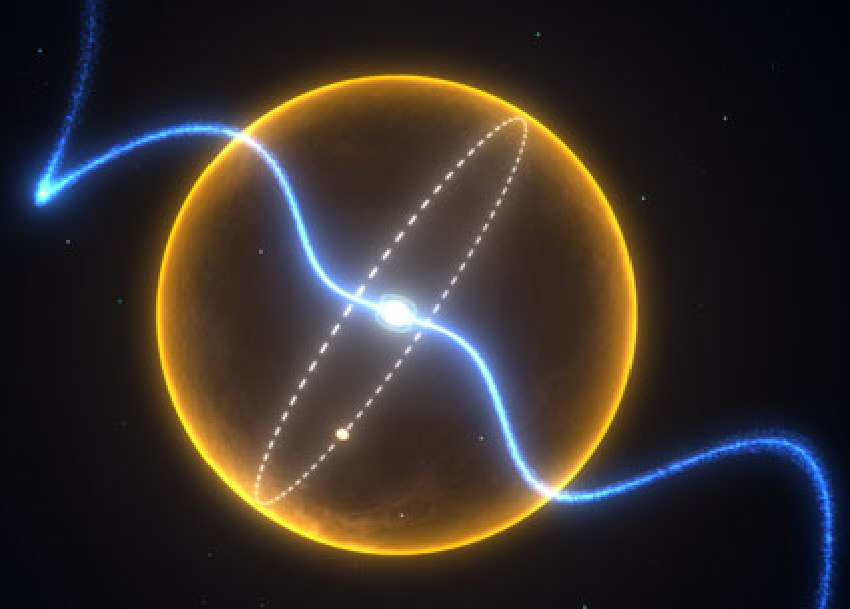[/caption]
“Remember when you were young… You shone like the sun.” Four thousand light years away in the constellation of Serpens, a millisecond pulsar binary is pounding out its heartbeat. Meanwhile an international research team of scientists from Australia, Germany, Italy, the UK and the USA, including Prof. Michael Kramer from Max Planck Institute for Radio Astronomy in Bonn, German are listening in. Utilizing the 64-m radio telescope in Parkes, Australia, the team made a rather amazing discovery. The companion star could very well be an ultra-low mass carbon white dwarf… one that’s transformed itself into a planet made of pure diamond.
“The density of the planet is at least that of platinum and provides a clue to its origin”, said the research team leader, Prof. Matthew Bailes of Swinburne University of Technology in Australia. Bailes leads the “Dynamic Universe” theme in a new wide-field astronomy initiative, the Centre of Excellence in All-sky Astrophysics (CAASTRO). He is presently on scientific leave at Max Planck Institute for Radio Astronomy.
Like a lighthouse, PSR J1719-1438 emits radio signals which sweep around methodically. When researchers noticed a specific modulation every 130 minutes, they realized they were picking up a signature of planetary proportions. Given the distance of its orbit, the companion could very well be the core of a once massive star whose material was consumed by pulsar’s gravity.
“We know of a few other systems, called ultra-compact low-mass X-ray binaries, that are likely to be evolving according to the scenario above and may likely represent the progenitors of a pulsar like J1719-1438” said Dr. Andrea Possenti, of INAF-Osservatorio Astronomicodi Cagliari.
With almost all of its original mass gone, very little of the companion could be left save for carbon and oxygen… and stars still rich in lighter elements like hydrogen and helium won’t fit the equation. This leaves a density which could very well be crystalline – and a composition which closely resembles diamond.
“The ultimate fate of the binary is determined by the mass and orbital period of the donor star at the time of mass transfer. The rarity of millisecond pulsars with planet-mass companions means that producing such ‘exotic planets’ is the exception and not the rule, and requires special circumstances”, said Dr. Benjamin Stappers from the University of Manchester.
“The new discovery came as a surprise for us. But there is certainly a lot more we’ll find out about pulsars and fundamental physics in the following years”, concludes Michael Kramer.
Shine on, you crazy diamond…
Original Story Source: Max Planck Institut for Radio Astronomy and Transformation of a Star into a Planet in a Millisecond Pulsar Binary.


I want to see someone with THAT strapped to their finger!
Please, please don’t tell my wife about this “diamond planet”! She’ll want one and I can’t afford it!
Rather it would be someone strapped and squished to that thing with the force of 19 gees!
Could we call the companion a black dwarf?
Interesting, but I don’t think that you can really call a dead white dwarf star a planet, it’s instead an another oddity in the zone between “proper stars” and “proper planets”, like the free-floating planets.
It’s another type of stellar core, like a neutron star or black hole.
Reminds me of Venor Vinge’s Deepness in the Sky … odd star with massive diamond satellite. Good Sci-Fi .. just shows that nature is at least as imaginative as us. Heh.
Planet Lucy! John lennon got it right afterall!
Let me in there!!!!! Let me in there!!!!!